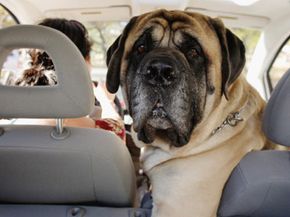Driving with your pet seems like a no brainer, right? You put your pet in the back seat, close the door and drive. While it seems simple enough, that's not always the case. Maybe Princess gets very excited when traveling and has had a few accidents in your backseat. Buddy, meanwhile, sheds so much you aren't sure what color your car's interior really is anymore. Or perhaps Rusty's always jumping back and forth, making quite the distraction, while Fifi doesn't seem to enjoy traveling at all.
Depending on your pet, your vehicle and the specific issue your pet may have with driving, there is a multitude of options to make driving with your pet more enjoyable, safe and comfortable for everyone involved.
Advertisement
This article will cover pet car seat covers, travel crates, car barriers, steps, ramps, car seats, booster seats and safety harnesses. That's a lot of accessories! You'll also learn basic tips for automobile safety when driving with a pet, regardless of what accessories you might need. And be prepared to discover that some of Lady's favorite activities are a no-no -- like sticking her head out the window when you drive.
If you are planning on traveling with a cat, you may be most interested in the travel crates page, as cats generally are not the calm car travelers that dogs are. It's generally best to skip the booster seats and safety harnesses on felines and stick with a sturdy travel crate, kennel or carrier for them.
So you've been using a towel or a sheet to cover your back seat to avoid contact with Max's accidents, but it's not quite cutting it. Forget the homemade remedies and consider a pet car seat cover, detailed on the next page.
Advertisement
